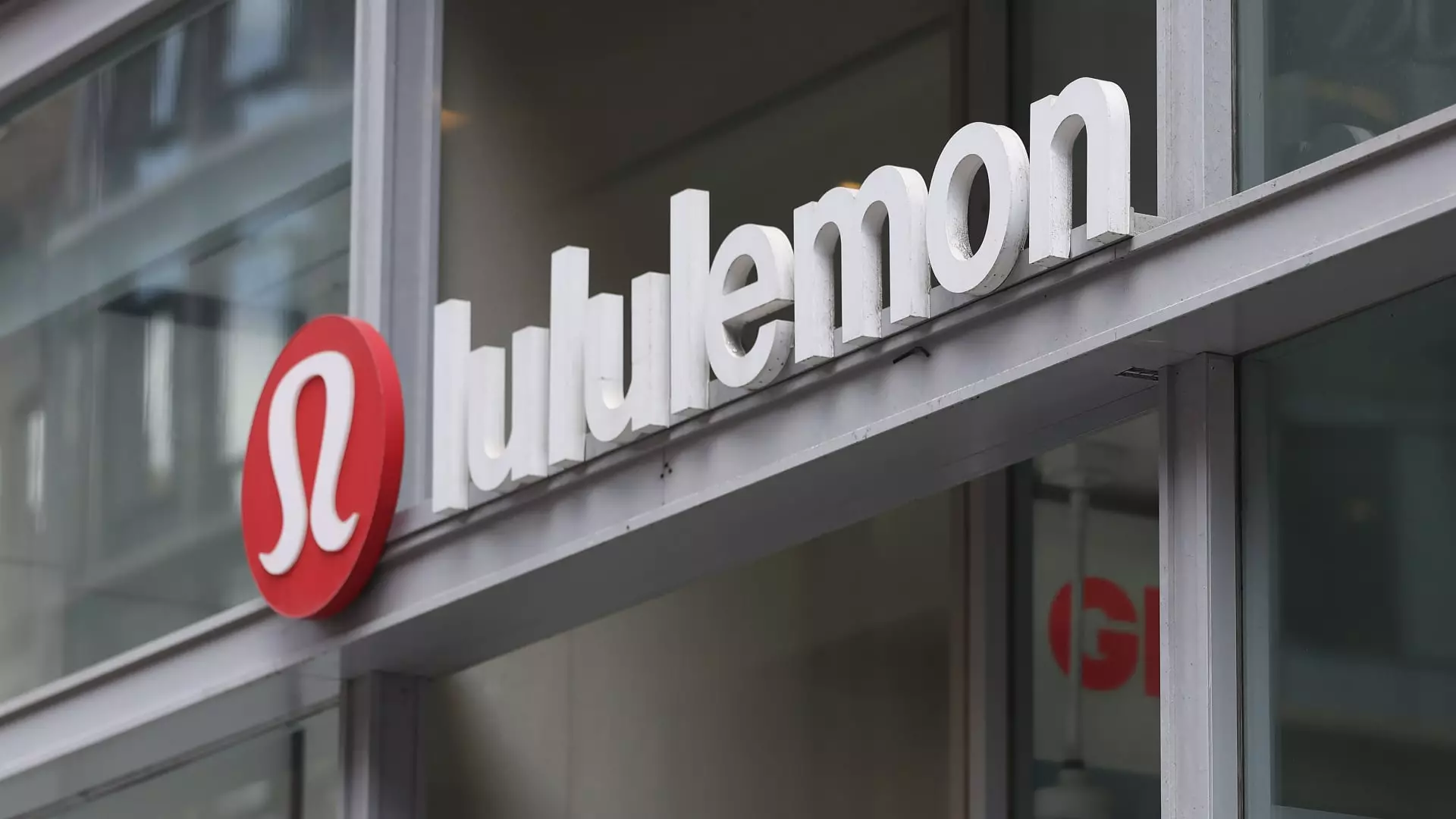The imposition of tariffs by President Donald Trump has been a subject of heated debates, sparking a firestorm of controversy in both political and economic circles. What can often start as a seemingly simple economic adjustment has evolved into a labyrinthine web of consequences that ripple through various industries. As companies strive to conserve profits, the ensuing chaos leads to backlash and loss that is not just confined to their P&L statements, but extends to the economy at large. The stark declines in stock prices for several key players during these turbulent times have laid bare the downside of such aggressive foreign trade strategies. The reality often doesn’t match the rhetoric, and the 2024 tariff policies serve as a classic case in point.
Lululemon and the Athleisure Dilemma
Lululemon’s struggle under the weight of Trump’s tariffs illustrates the vulnerability of consumer goods companies. After being announced, a devastating 11% dip in shares occurred, primarily because of the company’s reliance on Vietnamese production—about 40% of its goods come from there. The 46% tariff placed on products imported from Vietnam reveals an unsettling narrative: indulging in overseas manufacturing often leaves firms at the mercy of geopolitical tensions. The consumer might enjoy lower prices in the short term, but as tariffs mount, these costs inevitably trickle down, leading to increased retail prices. For a brand synonymous with fitness and well-being, this snag in its operational strategy raises questions about long-term sustainability in a highly competitive market.
The Downward Spiral in Footwear
Deckers Outdoor, the maker of Uggs, found its shares dropping over 14%. A mass exodus of suppliers fleeing from countries now burdened with exorbitant tariffs could lead to a significant restructuring for many footwear brands. With 68 partners in Vietnam and 125 in China, Deckers faces a critical juncture: is it time to reevaluate supply chains and domestic production? This conundrum mirrors that faced by other companies, such as Nike, whose shares also saw a steep decline of 12.1%. Tariffs serve not only as a pricing hurdle but also as an impediment to agility in a market that thrives on innovation and quick responses to consumer demands. When production lines become marred by geopolitical knife fights, brands risk losing relevance.
The Pain in Discount Retail
Discount retailers like Five Below and Dollar Tree felt the tariff pain acutely—27% and 9% stock declines respectively—shedding light on a far-reaching concern. Many of these businesses rely on the affordability of imported goods, and as tariffs rise, the downstream effect on pricing is unavoidable. Dollar Tree’s admission that it might resort to raising prices to maintain margins flips the discount retail model on its head: the very essence of low-cost living could be eroded due to external pressures. Consumers leaning toward budget-friendly shopping may soon find that discounts are an illusion when tarnished by trade policies designed ostensibly to boost domestic production.
The Financial Sector’s Uneasy Future
The banking sector is not immune to these economic tremors, with shares from firms like Goldman Sachs and Morgan Stanley experiencing an almost 8% dip. This decline reflects the trepidation among investors about potential cascading effects of tariff policies on economic stability. When the market is in flux, financial institutions brace for stormy weather. This concern sheds light on an overlooked aspect of such policies: the indirect impact they have on market confidence. As banks bolster their risk management strategies in light of uncertainty, the broader economic landscape becomes increasingly murky.
The Mixed Bag of Big Tech
Even the giants of the tech industry weren’t spared from the fallout. Notably, Amazon and Apple saw declines of more than 7% and 8%, reflecting investor anxiety about future profitability amidst rising production costs. The tech sector’s vulnerability to supply chain disruptions raises significant questions about its future trajectory. As companies grapple with increased operational costs stemming from tariffs, innovation may take a back seat to survival. The peril lies not just in short-term losses but in the long-term strategy that these corporations must now recalibrate under the uncertainties that tariffs bring.
The Luxury Sector’s Alarm Bells
RH, a luxury home furnishers, witnessed its shares plunge by an astonishing 43.5%, affirming that not even the affluent are insulated from tariff repercussions. With forecasts for weaker revenues from luxury items amid a difficult housing market, RH stands as a cautionary tale for aspiring luxury brands. The dual challenge of economic instability from tariffs and a swanky market that demands exclusivity serves as a stark warning that not all sectors can weather the storm equally.
As we witness these cascading effects of tariffs emanate through various sectors, it’s clear that the bold trade strategy initiated by Trump is not merely an economic maneuver, but rather a catalyst for a larger critique of our global manufacturing ethos. The economic landscape demands resilience, adaptability, and a critical eye toward the ramifications of such sweeping policies.

